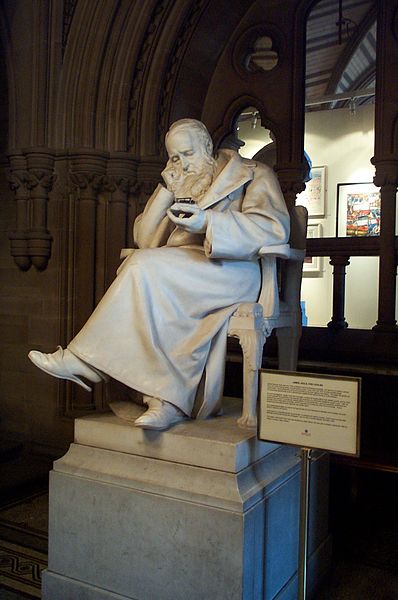Hello everyone. It’s been a long while since I was blogging, but I am back again now. The second-half of the year is rather less hectic for me, so I have some time to get back to this.
I’ve been considering recently the learning that students have achieved in our first year paper “Physics in Context.” This is a paper designed for students who haven’t done a lot of physics. We have collected various bits of data from this paper, and one of the clear messages is the difficulty students find in expressing physical understanding in words. For example, “what do I write down in my lab notebook?” was a question that cropped-up time and time again throughout the course.
It is really difficult for students to articulate their understanding. In some cases, this is because the vocabulary of physics is new, but also because practising physicists use common words in different ways to how they can be used in everyday language. For example, in everyday language we talk about ‘energy’ and ‘power’ interchangeably (as in ‘energy bills’ or ‘power bills’) but they are distinct concepts in physics. But physicists themselves are inconsistent in their usage. While they know what they are talking about, being inconsistent does not help students. In this article, Brookes and Etkina discuss how language affects students’ reasoning about heat in thermodynamics*.
‘Heat’ is a slipperly thing to grasp. (Actually, Brookes and Etikina suggest that we shouldn’t call it a ‘thing’. More correctly, it is a slippery process to grasp.) That’s not surprising – it took physicists such as Sadi Carnot, Benoit Clapeyron, Rudolph Clausius and James Joule (image) and many others collectively about fifty years or so of studying thermodynamics to fully grasp what it was all about. For a long time, the dominant theory of heat was the calorific theory – that ‘heat’ was somehow like a fluid that flowed from one thing to another. A hot object was hot because it had more heat. From a linguistic perspective, ‘heat’ here is being used as a noun. It’s being considered a thing.
Now, this way of thinking actually serves us pretty well for everyday purposes, which is one reason it is very difficult to shift. When I turn on my electric kettle, the element generates heat and this heat is transferred to the water in the kettle, which gets hot. Right? My heat pump (the very name ‘heat pump’ uses heat as a noun’!) pumps heat from outside to inside. Right? Well, no. More thermodynamically correctly, ‘heating’ is the process of transferring internal energy from one place to another. ‘To heat’ is a verb. So the heat pump heats the house (correct), and as a consequence the house has more internal energy and a higher temperature, (temperature being a measure of the internal energy per molecule.)
Another reason that it’s difficult to change the ‘heat is a thing’ thinking, is that teachers themselves talk of it in this way, even if they recognize that this is not technically correct. So we say ‘heat’, but deep down we really mean ‘the energy transferred through the process of heating.’ Difficult to grasp? For sure. For many purposes, using ‘heat’ as a noun is a reasonable and indeed even helpful form of thinking. But for many purposes it isn’t, and will lead to confusion, misconceptions and difficulties for students later on in their study. The problem is, argue Brookes and Etkina, how can we possibly expect students to distinguish between these ways of thinking when we are able to jump around between them so freely?:
Novice physics students … have the challenge of navigating expert ways of speaking that must appear ontologically ‘chaotic’ at first.
Many textbooks emphasize that heat is a flow of energy (j.e. ‘to heat’ is a verb) but then go on and use it as a noun. That’s mixed ontology. Confusing? I’ve done a hurried review of some of my blog entries that I’ve tagged ‘heat’. I’m quietly relieved that mostly I speak of heat correctly (for a physicist) but every so often the noun slips in.
So what should students be writing down in their laboratory notebooks? Brookes and Etikina suggest that students should not be encouraged to use technical terms until they have “established an agreed meaning in the classroom learning community.” They should be encouraged to write in non-technical terms first, and then, when they are understanding the “how and why”, technical terms should be introduced.
*I suspect you will need to pay for this article unless you have access via, for example, a university library.
Reference: Brookes, D. T. & Etkina, E. (2015). The importance of language in students’ reasoning about heat in thermodynamic processes. International Journal of Science Education, 37:5-6, 759-779. Note the irony in the title – ‘heat’ is used as a noun.
